These are 5 of the biggest spiders in SC. How dangerous are they?
Have you ever wondered what kinds of spiders in South Carolina are the biggest?
If you haven’t before, you might now.
You may be accustomed to seeing banana spiders in their expansive webs in corners of your yard, but did you know there are other large spiders in the state?
In fact, the Palmetto State’s own state spider is the largest of its species in the U.S.
As terrifying as this may sound, the truth might not be so terrible.
“Although it may seem contrary to your instincts, the largest spiders in South Carolina are usually not the most dangerous ones,” detailed A-Z Animals, a large animal encyclopedia site, which compiled a list of the biggest spiders in South Carolina.
Starting from the smallest, of the largest, to the biggest of the big in South Carolina, here are five of some of the biggest spiders to look out for in the state as categorized by A-Z Animals.
5. Southern House Spider
The southern house spider (Kukulcania hibernalis) is a common brown spider that is overall brown in color with a dark brown stripe extending from its eyes down its cephalothorax and has a bulbous, hairy abdomen. however, males and females’ colorations vary. Female southern house spiders are more of a charcoal gray, whereas the males tend to be more amber in color.
Female southern house spiders are also occasionally reported as small tarantulas, according to Orkin.
Females are larger than their male counterparts and are about 2 inches in diameter, including their leg span. Although not growing as large, males do still have long legs and are frequently mistaken as brown recluse spiders.
Even though these spiders can be found throughout South Carolina and like to build their webs near human structures, you don’t have to be too worried about their bite. Their bite is not very harmful to humans and will generally only cause moderate pain and a small bump at the site, reported A-Z Animals.
However, if the sight of a spider makes you queasy, you may want to stay out of their way.
Bird Watching HQ reported that the “males will crawl on anything in their way, no matter what it is, so some people think they are aggressive. But, these spiders do this because they are nearly blind and cannot see larger objects well.”
4. American Nursery Web Spider
The American nursery web spider (Pisaurina mira) is best known for its notable breeding and mating rituals aside from its size.
Many female spiders are known to eat the male after mating. Bird Watching HQ said that to prevent this, the male spiders will tie up the female’s legs with his silk to avoid being eaten.
Additionally, these spiders are named for their known protection of their egg sac.
The mother spider will carry the sac around in her jaws or attached to her spinnerets until the eggs are about to hatch. Once she senses this, she will then hide the sac and spin a silken enclosure around it and will defend her brood until they disperse after their first molt, detailed the University of Wisconsin’s Field Station in the College of Letters and Science.
These spiders can grow to have a 3-inch leg spread and are generally earth-toned in color ranging from a light brown to reddish brown with a dark brown pattern running down the middle of their entire bodies and bands around their legs.
Avoid the webs of a nursery web spider if you can. They can be found throughout the state and are generally not considered to be aggressive toward humans. However, the female will fiercely guard her egg sac, so tampering with it, even unintentionally, could result in a bite. These bites can be painful and swell, but, overall, are not harmful in terms of venom.
3. Joro Spider
The joro spider (Trichonephila clavata) is an invasive spider species from Asia that tends to intimidate those that come near it due to its size, coloration and behavior.
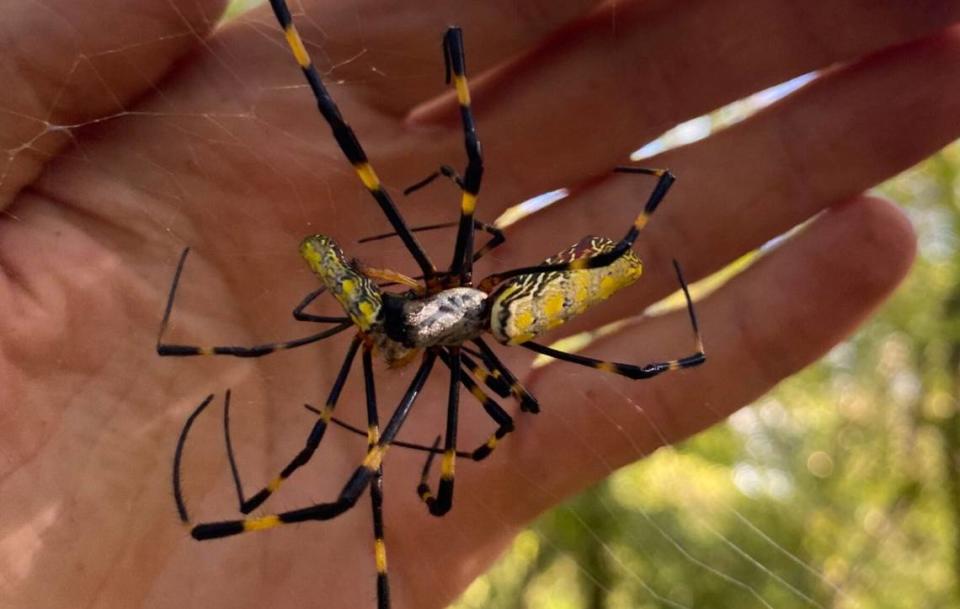
These spiders are bright yellow and black as adults with distinct red markings on their underside.
This species of spider looks very similar to the golden silk-orb weaver, which is a frequent sight in South Carolina, but differs in slight variations of color with the joro spider, which sports a much brighter yellow overall color. Also similarly, the females are both considerably larger than their male counterparts.
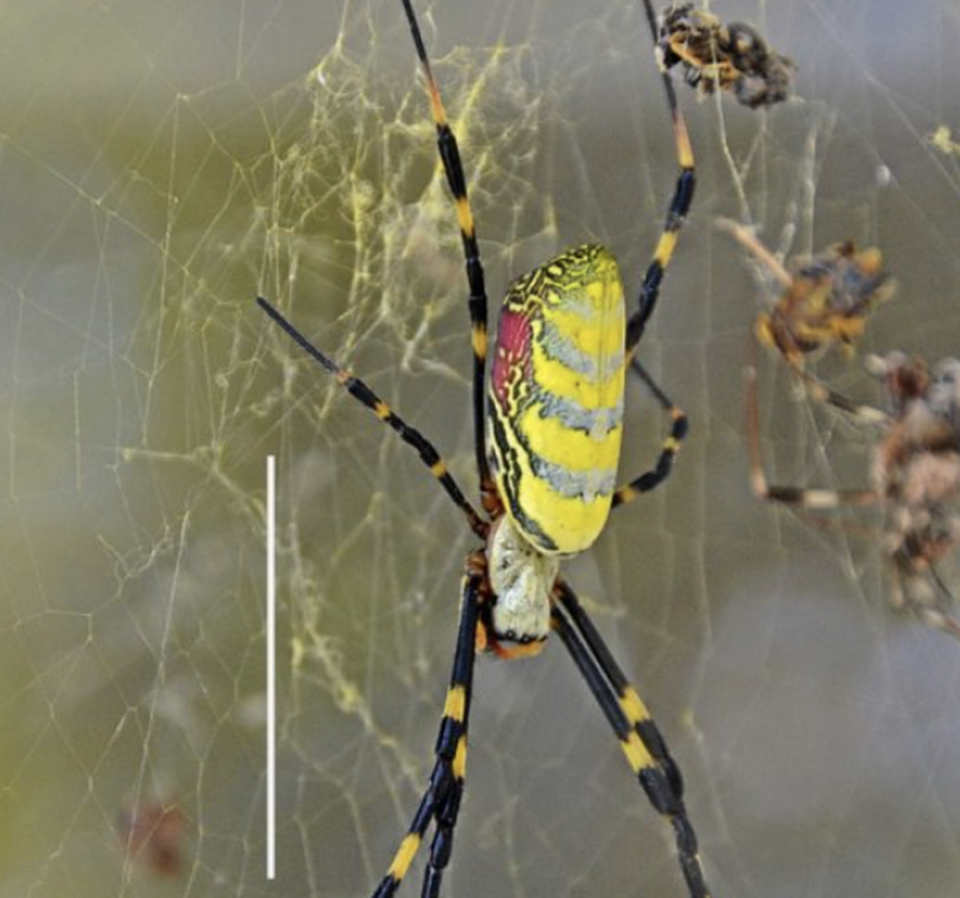
Adult female joro spiders have a cylindrical abdomen and a round cephalothorax. “Their body can grow up to 1 inch long and their leg span can measure up to 4 inches, which is roughly the size of a human palm,” WebMD states.
The males are much smaller and are generally only seen on a female’s web. Their body length can measure up 0.3 inches and only ever spun their own webs to catch prey as juveniles.
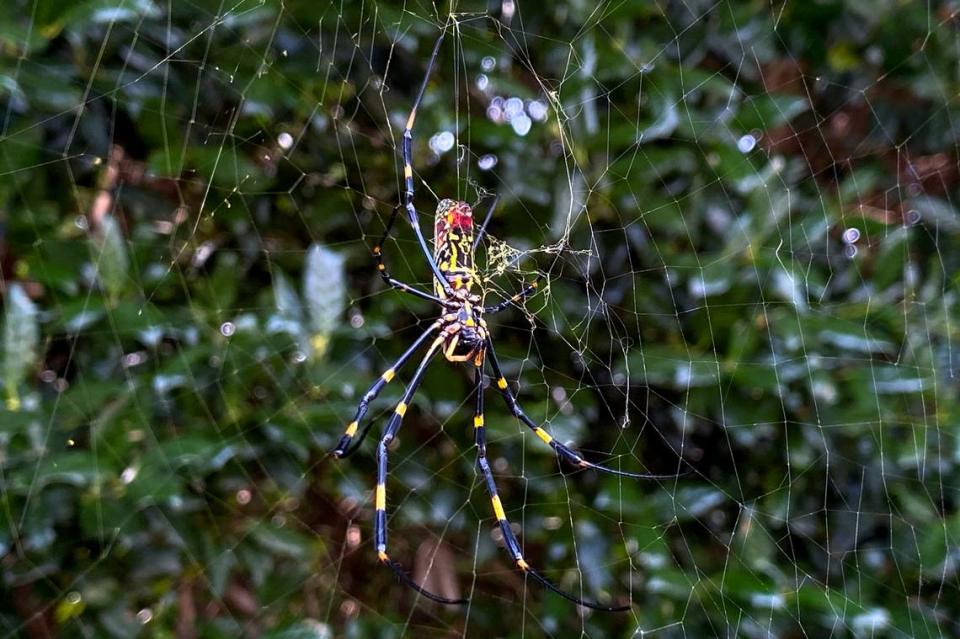
The Joro spider is also known for making a balloon out of its web, which allows for it to be carried away by the wind. Some can travel vast distances.
A bite from one of these spiders has been compared to feeling like a bee sting and is typically not something to worry about.
As of July 2022, this spider species has only been reported to be present in the Upstate and parts of the Midlands regions of South Carolina, according to Clemson University’s Home & Garden Information Center.
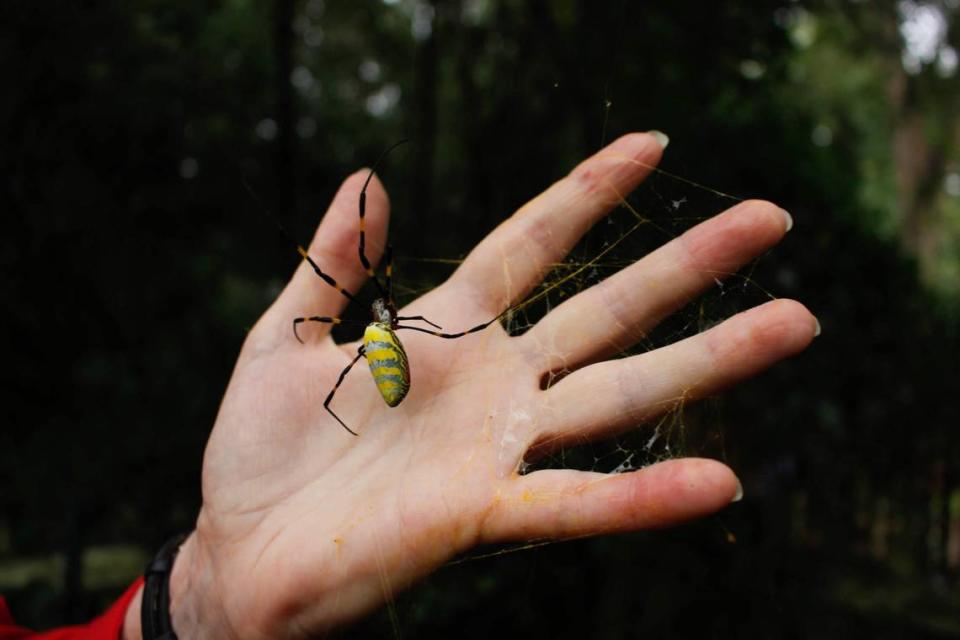
2. Carolina Wolf Spider
The Carolina wolf spider (Hogna carolinensis) is the state spider of South Carolina and the largest of the wolf spider species, with the ability to grow up to be approximately 4 inches long.
The spider was designated as the official state spider of the Palmetto State by Act Number 389 of 2000.
The Carolina wolf spider is large, hairy and fast.
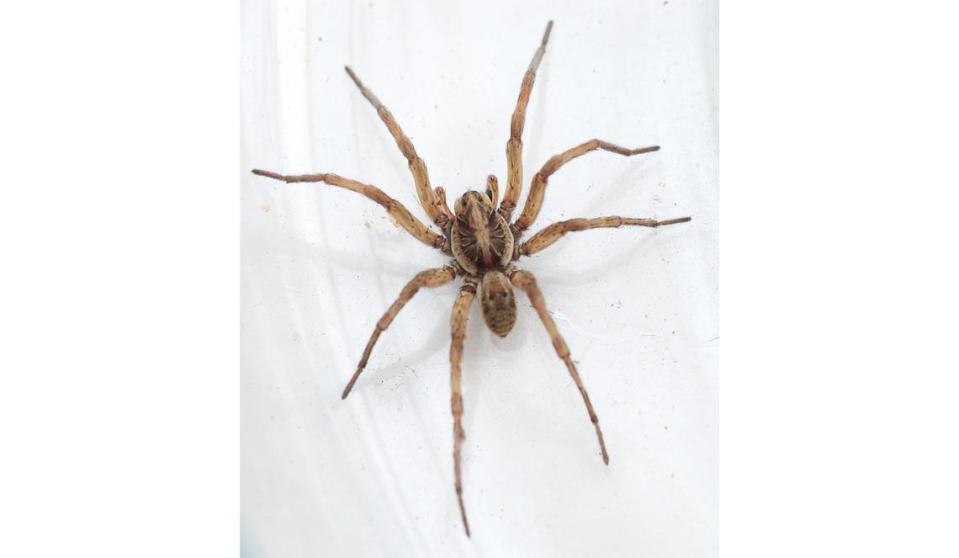
Their mottled brown and black bodies easily camouflage themselves on forest floors, however, in more coastal climates, these spiders are easier to spot on the sandy ground of coastal shorelines.
These spiders can be found throughout the state and are one of the most recognizable spiders in South Carolina.
Additionally, these spiders are ground hunters and are not a spider that waits for something to get stuck in its web. They both actively chase down their next meal and act as ambush predators. Carolina wolf spiders have proven to be hostile in their attack and display a venomous bite that paralyzes their prey before they consume their meal.
Since wolf spiders are so large, their bite may be painful, but pain, swelling, or itchiness around the bite shouldn’t have much longevity. However, they are not aggressive and will likely choose to flee rather than attack if you happen to cross its path.
1. Dark Fishing Spider
The dark fishing spider (Dolomedes tenebrosus) is arguably the biggest spider in South Carolina.
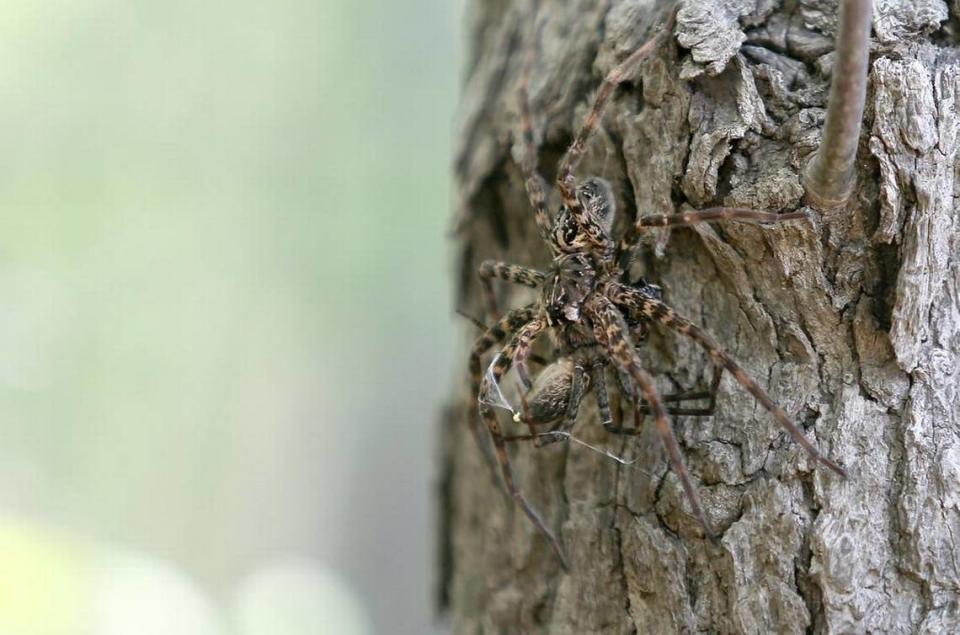
This spider preys on invertebrates on land and tadpoles, small fish, and aquatic insects in water. Dark fishing spiders have the ability to skate, row, or run across the water when they hunt as well as dive below the surface to catch their supper. Additionally, an alarmed fishing spider can also hide below the surface of the water for up to half an hour by breathing air that’s caught in its hairs, according to the University of Wisconsin’s Field Station in the College of Letters and Science.
These spiders have long, furry legs and the females can become quite large.
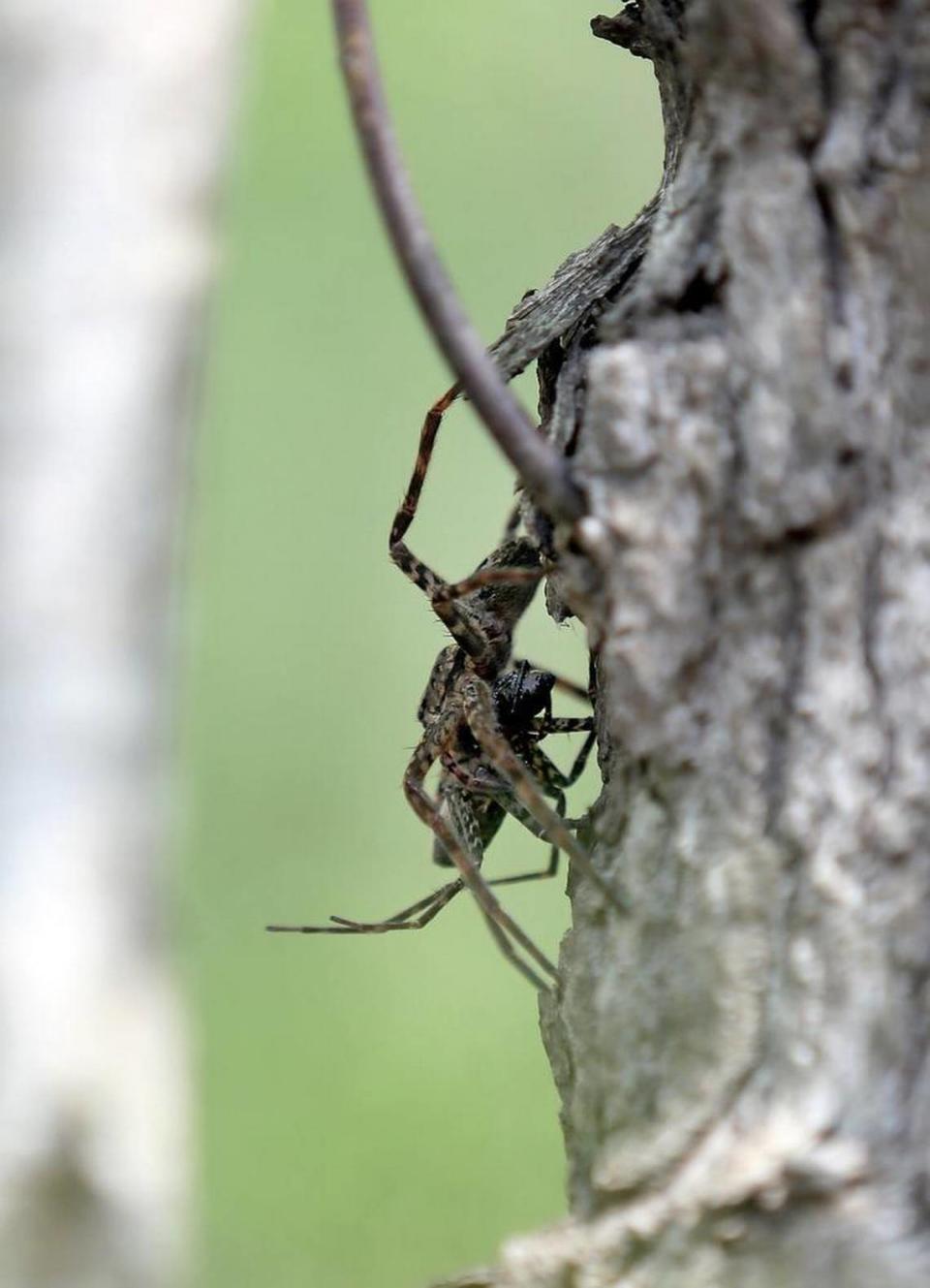
A-Z Animals reports that this spider’s legs have alternating light and dark chevrons on the femur and light and dark bands on the tibias and lower legs.
Similar to other spiders on this list, the males remain smaller than the females, which can have a body measuring an inch long with a 3 or more-inch leg span; thus, making an approximate maximum size for this species being at about 4-4.5 inches in length.
Luckily, despite its massive size, these spiders will usually run from people if they get the chance and, although painful, their bite is typically no more severe than a bee sting.

